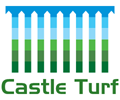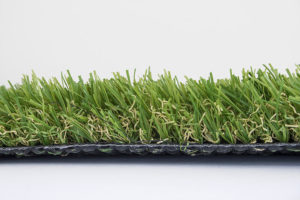Artificial grass, also known as synthetic turf, has become increasingly popular over the years. It’s a low-maintenance, cost-effective, and durable alternative to natural grass. With advancements in technology, artificial grass has come a long way in terms of appearance and functionality, making it an excellent choice for a wide range of applications, from residential landscaping to sports fields and playgrounds.
In this article, we will explore the history, types, benefits, and maintenance of artificial grass.
History of Artificial Grass:
Artificial grass was first introduced in the 1960s as an alternative to natural grass for sports fields. The first artificial grass was made from nylon and was initially used for indoor sports like baseball and football. However, this early version of artificial grass was not very durable and had a short lifespan.
In the 1970s, a new type of artificial grass was introduced, made from polypropylene. This new type of artificial grass was more durable than nylon and could be used for outdoor sports like football and soccer. However, this early version of artificial grass still had some issues, such as a lack of realistic appearance and poor drainage.
In the 1980s, a new type of artificial grass was developed, made from polyethylene. This new type of artificial grass had a more realistic appearance and was more durable than previous versions. It was also designed with better drainage, making it suitable for a wider range of applications, including residential landscaping.
Types of Artificial Grass:
There are several types of artificial grass, each with its own unique characteristics and benefits.
- Nylon Artificial Grass:
Nylon artificial grass was the first type of artificial grass to be introduced. While it is still used for some applications, it is less common than other types of artificial grass. Nylon artificial grass is durable but has a stiff texture that does not resemble natural grass very well.
- Polypropylene Artificial Grass:
Polypropylene artificial grass is one of the most affordable types of artificial grass. However, it is also the least durable and is not suitable for heavy foot traffic or extreme weather conditions.
- Polyethylene Artificial Grass:
Polyethylene artificial grass is the most popular type of artificial grass today. It is durable, has a more realistic appearance, and is suitable for a wide range of applications, including residential landscaping, sports fields, and playgrounds.
Benefits of Artificial Grass:
- Low Maintenance:
One of the primary benefits of artificial grass is that it requires very little maintenance. Unlike natural grass, which requires regular mowing, watering, and fertilizing, artificial grass stays green and lush year-round with minimal effort. This makes it an ideal choice for busy homeowners, as well as commercial property owners who want to save time and money on landscaping maintenance.
- Cost-Effective:
While the initial cost of installing artificial grass can be higher than the cost of natural grass, it can save you money in the long run. Because it requires very little maintenance, you won’t have to spend money on lawn care services, lawn mowers, or fertilizers. Additionally, it can reduce your water bill, as you won’t need to water your lawn as often.
- Durable:
Artificial grass is incredibly durable and can withstand heavy foot traffic and extreme weather conditions. Unlike natural grass, which can become patchy and brown in areas of high foot traffic, artificial grass maintains its lush green appearance year-round. It is also resistant to pests and insects, which can damage natural grass over time.
- Environmentally Friendly:
Artificial grass is an environmentally friendly choice for landscaping. Because it requires no watering or fertilizing, it can conserve water and reduce the use of harmful chemicals in your yard. Additionally, because it does not require regular mowing, it can help reduce air pollution and noise pollution from lawn mowing.



Leave a Reply
Your email is safe with us.